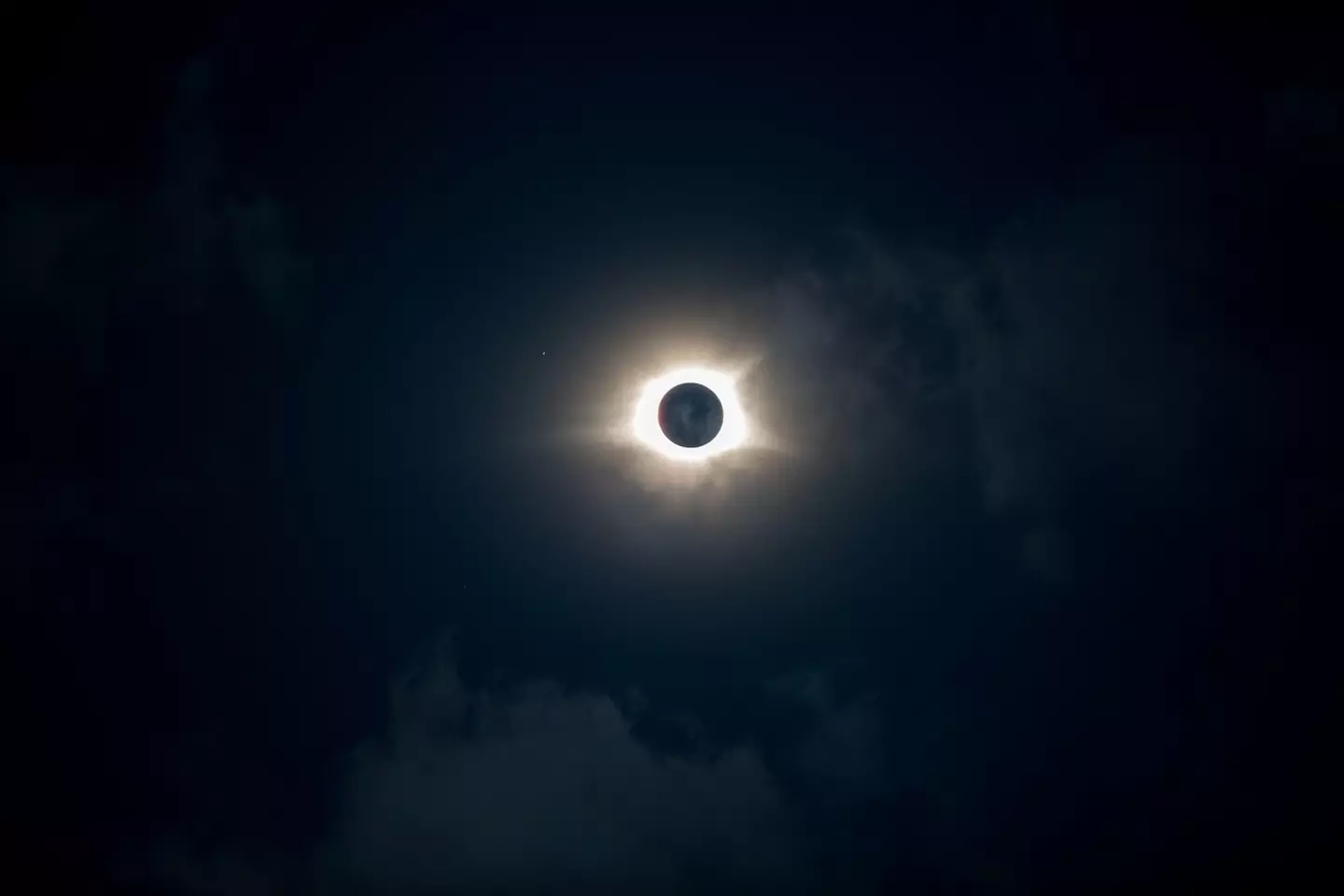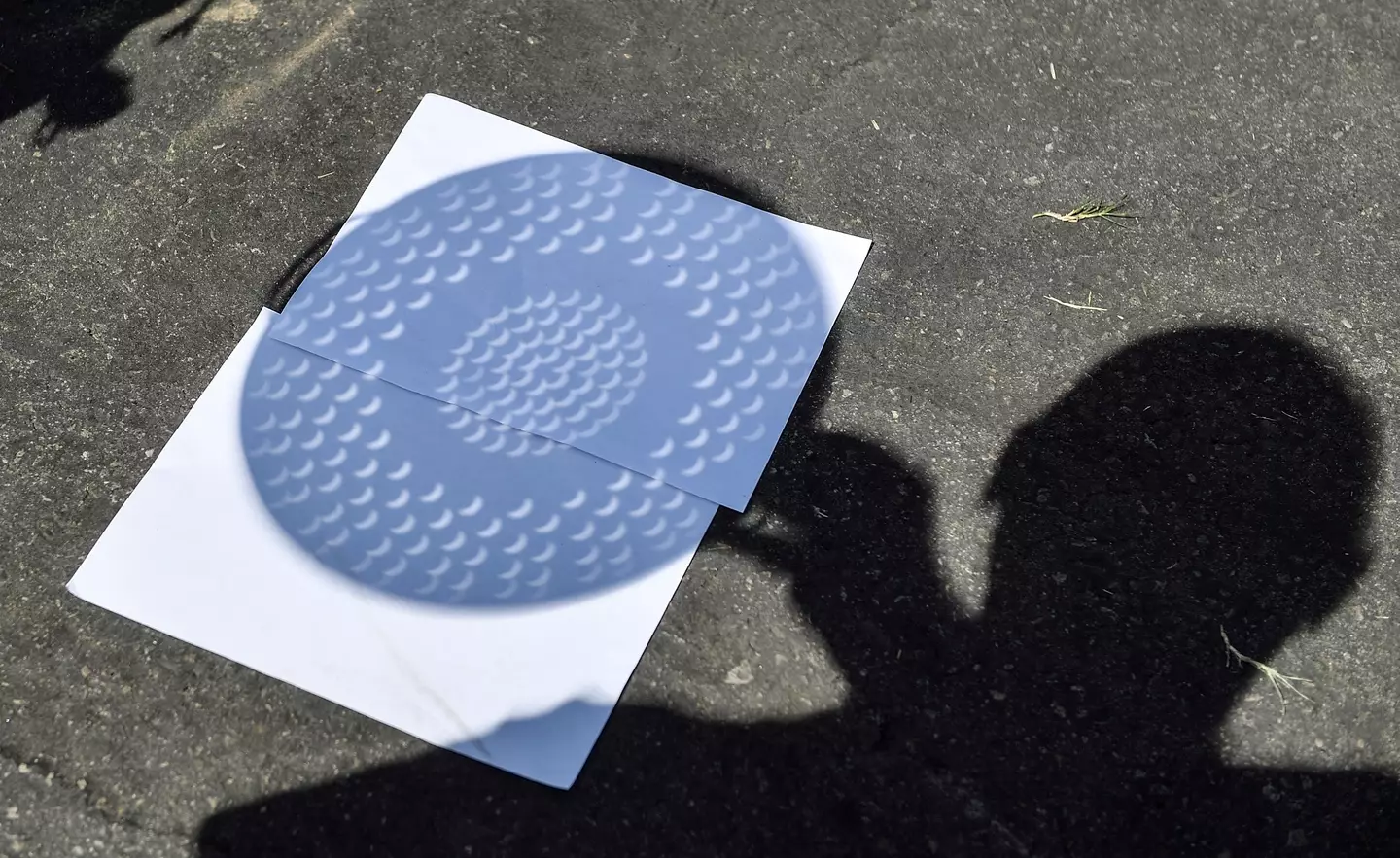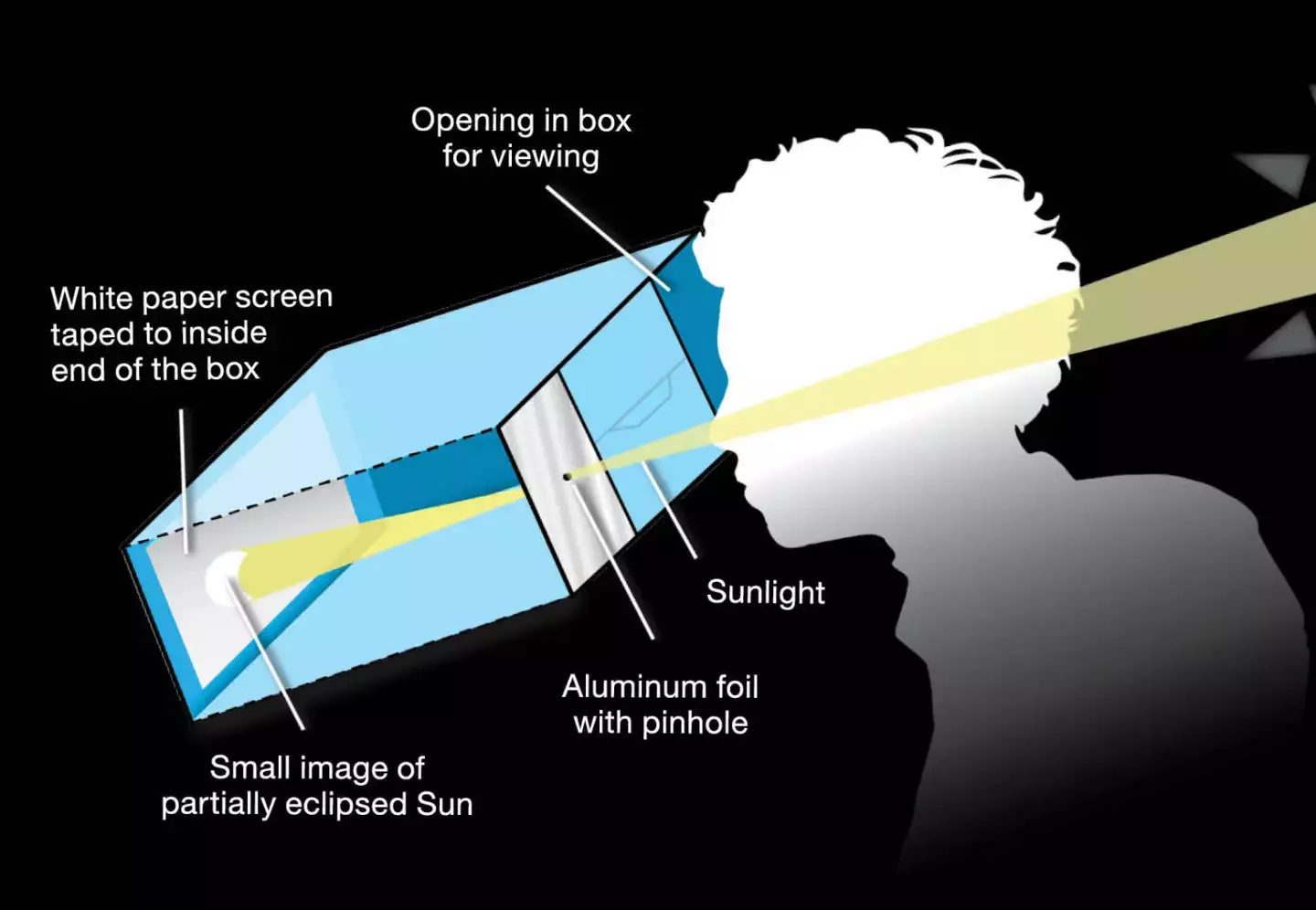
The day of the solar eclipse is finally here, and scientists have shared some tips on safe ways to watch it unfold in real time.
Total solar eclipses occur somewhere on the planet approximately every 18 months, and today (8 April) it's time for Mexico, the US and Canada to observe the event.
While millions of people will be able to witness a partial solar eclipse as the Moon makes its way in front of the Sun, only those in the eclipse's path of totality will see the Moon’s shadow completely cover the Sun, causing the sky to darken.
Totality is set to begin in the US in Texas, where the sky will darken from 1:40pm CDT, before making its way north-east through the country and exiting through Maine at 3:34pm EDT.
Before people start turning attention to the skies, though, scientists have encouraged people to be safe when observing the total solar eclipse.
Advert
Remember - it's not safe to look at the Sun with the naked eye, as scientists have warned that it can cause permanent damage.
One safe way to view the solar eclipse is through glasses which have been specially designed to view the Sun.
The glasses are not ordinary sunglasses, as the American Astronomical Society (AAS) explains that special-purpose solar filters should 'comply with the transmittance requirements of the ISO 12312-2 international standard'.
Ordinary sunglasses, on the other hand, transmit more sunlight than is safe for our eyes.
Advert

"You shouldn't be able to see anything through them, except perhaps very bright lights, which should appear very faint through the glasses," the society explains.
If you plan to use solar eclipse glasses, make sure you inspect the filters before use for any scratches, punctures or tears.
However, if you don't have glasses, there are some different ways you can view the eclipse.
Use a colander
One fun and simple way to ensure you don't miss out on the eclipse is to use a colander to project the light on to the floor, and watch the scene unfold from there.
Advert
As the Moon passes over the Sun, the light on the ground will change to create dozens of tiny eclipses before your eyes.
Create a pinhole projector
A slightly more advanced version of the colander comes in the form of the pinhole projector, which can be made using a piece of cardboard.
To make a pinhole projector, all you need to do poke a hole through a piece of cardstock or cardboard. You can then hold up the card and look down at the ground to see the eclipse projected through the hole.
Advert

Watch the eclipse through a cereal or shoe box
Not only do you get to watch the eclipse with this method, but it gives you an excuse to eat a big bowl of cereal, too!
NASA has shared how this method works; after emptying the cereal box - or removing the shoes from a shoe box - cut a white piece of cardboard that will fit into in the bottom of the box.
Advert
Then remove both ends of the top of the box, but leave the center in tact.
On one of the open ends, tape a piece of foil over the hole and push a hole approximately 3mm in diameter through the foil.
You can then hold the box with your back to the Sun and look through the opening of the box, with the foil facing towards the sun. You should then be able to see a small image of the Sun projected on the white paper inside the box.

Use your hands to filter the light
If you don't have a box or colander to hand, one other way you can view the eclipse is through your hands.
Advert
Placing one hand vertically and one horizontally, place your fingers on top of one another and spread them apart to create holes between your fingers.
Turning your back to the Sun, angle your hands so sunlight hits them and the eclipse will be projected through the holes on to the ground.
When it is safe to look at the sky
If - and only if - you are inside the path of totality during the eclipse, there is one period during the event when it is safe to remove your eclipse glasses.
Advert
That moment comes during totality, when the Moon completely covers the Sun’s face and it gets dark. However, the AAS advises viewers that if you're watching the eclipse through glasses, they must be replaced as the Sun begins to reappear.
If you are outside the path of totality, the American Academy of Ophthalmology says 'there is no safe time to look at the sun with the naked eye'.
"You must protect your eyes while watching the entire eclipse," it adds.
Happy viewing!